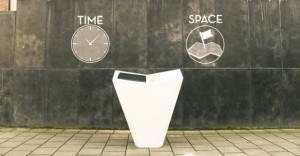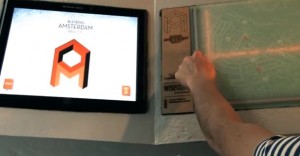Creating at Create-IT
Create-IT applied research
CREATE-IT applied research is the knowledge center of the HvA’s Media, Creation and Information domain. At this knowledge center, lecturers, students and researchers carry out applied research commissioned by the creative industry and the IT sector. The knowledge center collaborate with universities and other knowledge institutes. Research results are used by the professional sector as well as adapted for educational purposes. The mission of Create-IT is to train young, critical professionals and, by involving them in applied research, equip them with the best possible tools for operating in the rapidly developing professional field (Create-it). The research results can be applied in the real world and will ensure that the education curriculum is kept up to date. It provides a platform for enterprising, creative and motivated students, lecturers and researchers to carry out research for the growing and innovative creative industry and IT sector in- and around Amsterdam, as well as internationally.
Basic research VS applied research for media studies
Basic and applied science are faced with the well known distinction between basic and applied research (Sintonen). The basic sciences are supposed to describe, explain and help to understand and tell us what it is. Applied sciences are supposed to predict and it tells us what it will be. In addition, there is a particular form of applied sciences which tells what ought to be, so that we can attain a given a goal. These different sciences are not supposed to produce true or false knowledge nor to correctly predict what will happen, but to enhance human skills and generate instrumental knowledge for the production and manipulation of both natural and artificial systems (Niiniluoto) – which can be highly relevant in communication and media studies.
Ecological model for Mediastudies
The linear model is the most often used model in academic research. Here the basic research leads to applied research, then commercial development phase, and finally production and operation phase (See Figure 1). The linear model gives precedence to basic research, seeing it as the forerunner of applied research.
The linear model assumes that basic research precedes applied research, is widely accepted, especially by basic science researchers (Schneiderman). For many researches the linear model will work out and some applied research will lead only to innovations or refined technologies. However, in my opinion media studies research are in many cases the most complete when there is a interaction of basic and applied research (Figure 2), called the ecological model.
Here it’s a perfect combination of research teams with diverse skills who can work together to produce dual benefits: (1) publishable research results and (2) focused practical solutions that serve the existing professional market (3) translating and relating to educational sector. s for companies. The model breaks traditional academic disciplinary boundaries and requires new collaborations, but they can have high payoffs for all parties.
Literature
Niiniluoto, Ilkka. (1987) Applied Science–A Philosophical View. Helsinki: Academia Scientiarum Fennica, pp. 137-142.
Schneiderman, Ben. (2013). Toward an Ecological Model of Research and Development The choice between basic and applied research is a false one. The Atlantic, Technology. < http://www.theatlantic.com/technology/archive/2013/04/toward-an-ecological-model-of-research-and-development/275187/>
Sintonen, Matti. (1990). Basic and Applied Research: Can the Distinction Still be Drawn?. Science Studies 3, no. 2 pp. 23-31.
Image sources
Create-it: http://www.create-it.hva.nl
Figure 1 Linear Model: http://www.theatlantic.com/technology/archive/2013/04/toward-an-ecological-model-of-research-and-development/275187/
Figure 2 Ecological model: http://www.theatlantic.com/technology/archive/2013/04/toward-an-ecological-model-of-research-and-development/275187/



